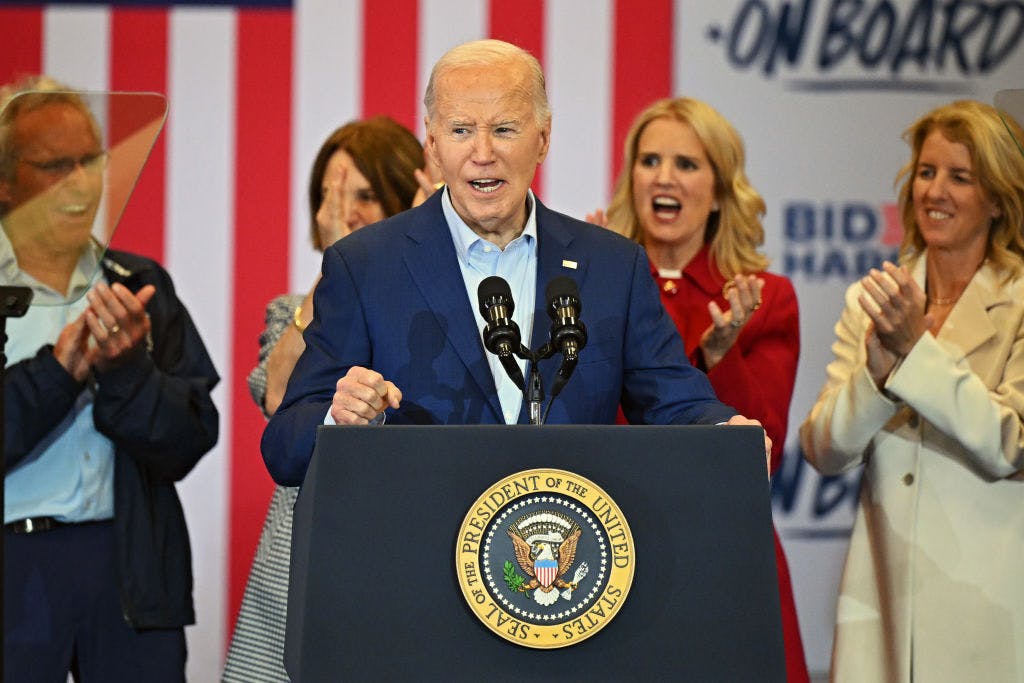The Economy: From Bad to Worse — Stagflation
Consumer spending has slowed, capital investment slowed, inventories slumped — and the trade deficit widened.

President Biden’s economy has gone to worse from bad. It’s not just high inflation and falling worker wages. Now, we’ve got higher inflation and lower growth. And that will drive wages down as well.
It’s called stagflation. The GDP report came in at 1.6 percent for the first quarter of 2024, way down from the temporary growth spurt in last year’s second half.
Meanwhile, the core inflation rate in the first quarter jumped to 3.7 percent at an annual rate, way above the Fed’s 2 percent target.
Now, inside the report, consumer spending slowed, capital investment slowed, inventories slumped. The trade deficit widened.
So what is Mr. Biden’s answer on the campaign trail? Spend more, tax more, regulate more.
And that is a perfect policy storm for continued stagflation, meaning even weaker growth and higher inflation.
Mr. Biden is crowing over his intention to let all the successful Trump tax cuts expire. As is always the case with Mr. Biden, his economic statements are completely counterfactual.
Now, I have gone over this ground so many times, but distinguished economist Larry Lindsey is writing that people making less than $200,000 had an average tax cut of 5.5 percent under President Trump.
Now, that’s a bigger number than the 3.9 percent tax cut for those making over $200,000. Real weekly earnings during the Trump years rose 7.7 percent between the end of 2016 and the end of 2020.
Now, these are average families. These are typical working folks. They are not rich people. And they enjoyed a virtual boom under Donald Trump.
Meanwhile, under Mr. Biden, real wages have dropped 2.9 percent.
So let me get this right. Typical families had their income up 7.7 percent under Mr. Trump, but fall 2.9 percent under Mr. Biden. That is a 10.5 percent swing against Biden.
And that explains so much of why economic confidence in Mr. Trump typically runs 25 percentage points or more higher than Mr. Biden.
Meanwhile, the key measure most widely used to track inequality is called the Gini coefficient.
It declined significantly under Trump. He was the first president in four decades to leave office with a lower Gini coefficient than when he entered.
That means inequality fell during the Trump years. That is part and parcel with middle- and lower-income people seeing the biggest gains from the Trump tax cuts — no matter what untruths Mr. Biden may be spewing on the campaign trail.
Meanwhile, Mr. Biden has increased regulatory costs by $1.4 trillion, which is strangling small business, and, by the way, is killing electricity and other sources of power necessary to underpin economic growth. Plus, Mr. Biden continues to spend his keister off.
And Democratic economist Jason Furman, an honest man, has pointed out that the $500 billion or more cost of Mr. Biden’s plans to cancel student loans will increase inflation and increase interest rates. That includes increasing mortgage rates as well.
Basically, Mr. Biden is trying to temporarily boost consumer demand while strangling the business supply of goods and services. That is a stagflation scenario, or worse.
Mr. Biden says he’ll permanently expire the Trump tax cuts. Voters, though, are suggesting they will permanently expire and retire Joe Biden. Think about that.
From Mr. Kudlow’s broadcast on Fox Business Network.

